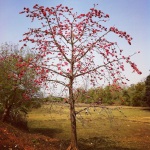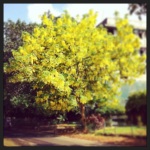Subhas Chandra Pattanayak
Orissa is celebrating Dola festival, the festival of colors matching the scintillating arrival of the Spring Season. Radiant new leafs and glowing flowers of deep red, yellow and pink colors – quite seasonal to Spring – prepares this splendid soil for withstanding the scorching Summer.
With the entire population enjoying the ecstasy of Spring Season, the Dola Purnima – the full moon day of Oriya month Faguna, so named after Fagu (the vibrant colors), becomes the day of liberty for Orissa’s Gopal caste people, who, on annual ‘Bartan’ (economic bondage), tend the cattle of villagers for a period of one year from Pahili Dola (the day following the Full Moon Day of Faguna) till the eve of the next year’s Dola Purnima.
But the day of liberty for them ends in a day. Their bondage begins the day following the Dola Purnima as the cattle owning villagers offer to them ‘Luna’ (salt) and ‘Chana’ (Oriya gram, otherwise known as Khesari) as a mark of their re-employment on ‘Bartan’.
In my childhood days I had seen in Tigiria how they were venting out their inner agony over unending bondage in song and dance to the rhythm of their wooden sticks (‘Panchana’) that they use to keep the cattle herds under control.
In their songs, they invariably recall their lost collective valor by use of which their community hero Sri Krushna had exterminated the tyrannic king Kansa of Mathura. They recall in their songs Sri Krushna’s stay in Gopapura – the land of the Gopala (cattle grazers) till his departure for Mathura and how Radha’s love had made him strong enough to vanquish the enemy of the people.
Behind every traditional folk dance, there is a class history. Dola Dance of the cattle grazers has such a class history that needs a deep study.
This small video, recorded yesterday near Athgarh while I was returning to Bhubaneswar from Tigiria, is a contribution in this regard. It carries the pride of the Gopal people over their valorous past. They use their ‘Panchana’ for tuning their anger against the bondage while recalling of their lost class victory over the demonic Kansa.
As a community, on ‘Bartan’ in villages, they are finding Kansa in upper caste masters whose cattle herds they tend on enforced acceptance of salt and gram. Accurate use of ‘Panchana’, in guise of tuning their songs and dance breaths their suppressed wrath against the exploitive system, though plutocracy has given this a mask of culture.
Time coms and time goes, but agony of the cattle grazers against a Bartan neither ends nor is noticed.










0 comments » Write a comment